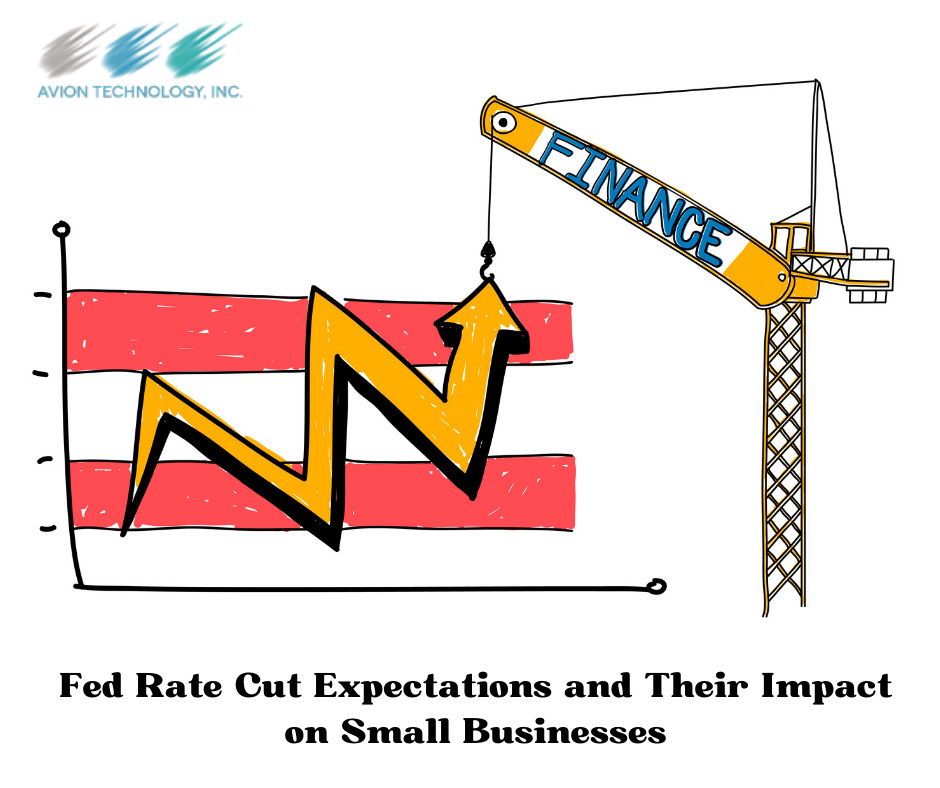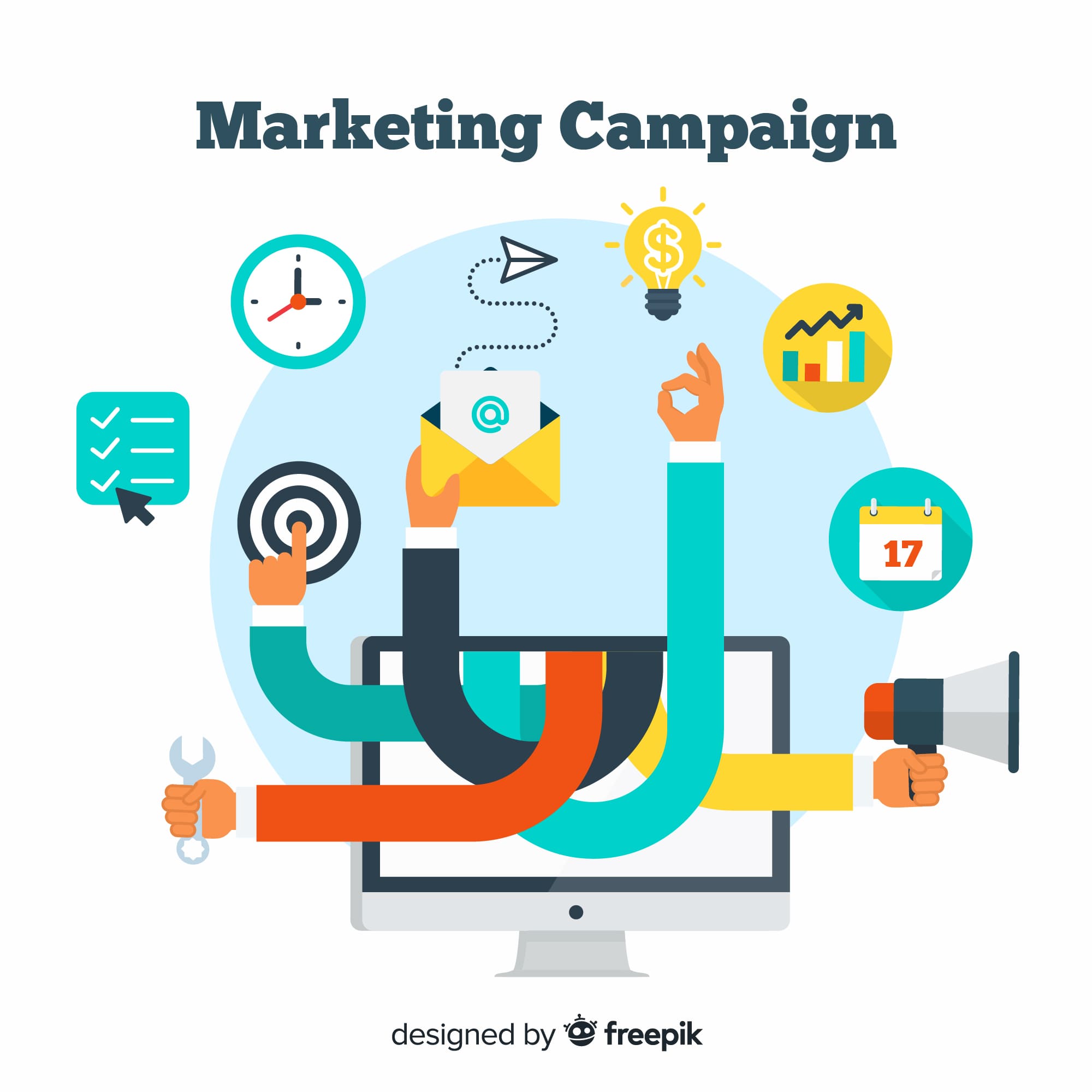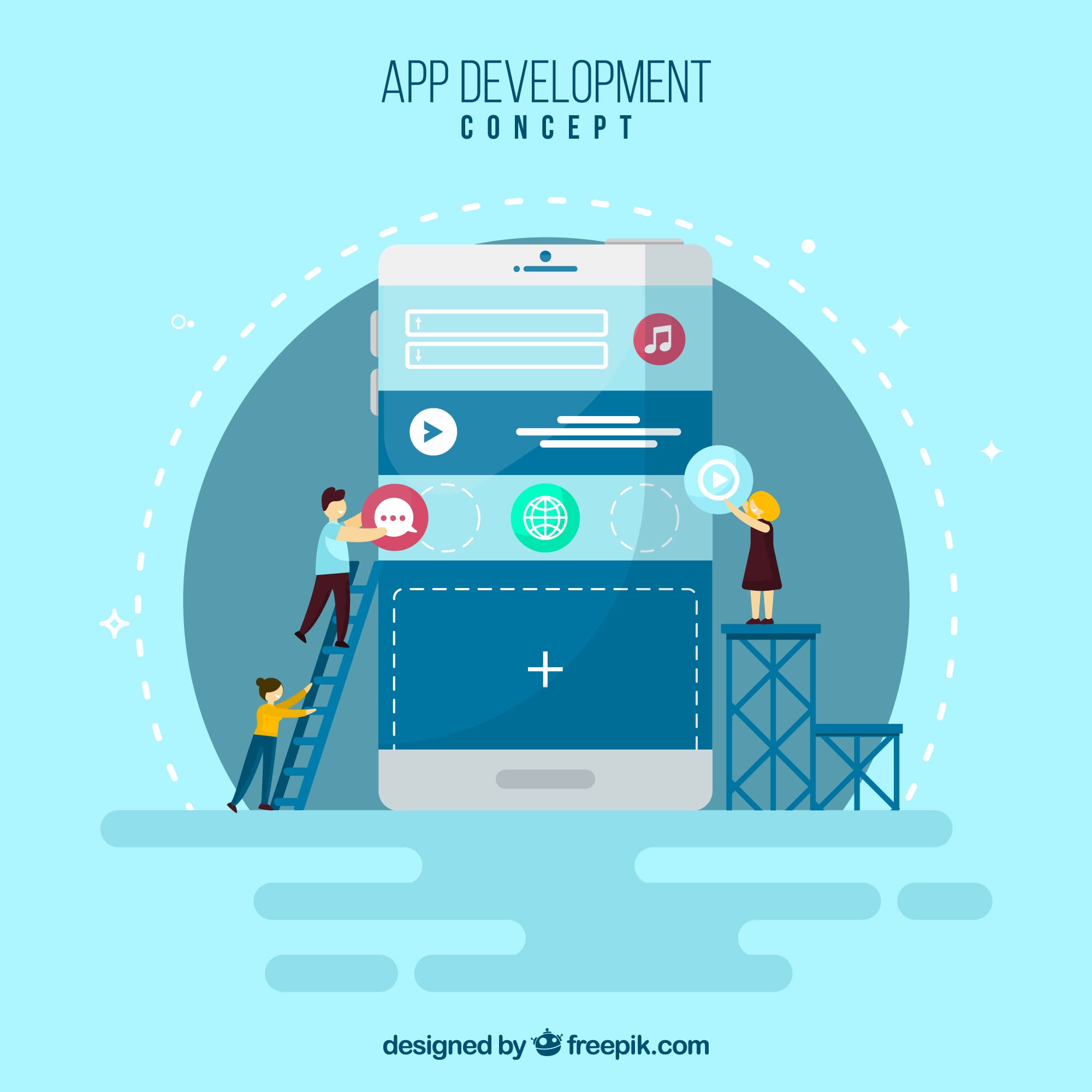
Top Web Development Trends and Best Practices for 2025
Emerging Web Development Trends in 2025
1. AI-Powered Web Development AI web development helps with process automation, making web development faster and more efficient. AI-based chatbots, automated coding tools, and machine learning-based algorithms make websites smarter and more interactive. AI is trending towards better user experience and enables businesses to focus on innovation. 2. Progressive Web Applications (PWAs) PWAs are becoming more and more widely used since they’re fast, can be used offline, and provide an app-like experience. Similar to an actual native app, PWAs are advantageous because they possess the benefits of both a website and a mobile app. 3. Voice Search Optimization As more people use voice assistants such as Siri, Alexa, and Google Assistant, optimizing websites for voice search is becoming necessary. Websites designed for voice search are built around natural language processing (NLP), conversational keywords, and structured data that increase your visibility in the search engine results pages. 4. Web 3.0 and Blockchain Integration Data is being decentralized and security is being improved through blockchain technology along with the redefinition of the internet through Web 3.0. These include improving transparency, preventing data breaches, and giving users greater control — and therefore we can expect businesses that adopt blockchain for web development to reap the benefits. 5. Serverless Architecture Web 3.0 is speeding the transformation of the internet by dictating its operation, decentralizing access to data and data usage, while also improving security through blockchain technology. Web development companies using blockchain can offer transparency, avoid data leaks, and empower users with more control over their data. 6. Motion UI and Microinteractions Interactive web components, animations, and micro-interactions are also becoming more common to enhance user engagement. Motion UI helps create visually appealing and dynamic web experiences, making websites more attractive and user-friendly. 7. Enhanced Cybersecurity Measures As cyber threats continue to grow, web security still takes priority. And, the implementation of advanced security measures will help businesses protect user data and maintain trust, including the addition of multi-factor authentication (MFA), HTTPS encryption, and AI-driven threat detection.Best Practices for Modern Web Development
These best practices should be followed while building your own website of 2025 for performance, security, and user satisfaction. Here are some key principles: 1. Mobile-First Design With more web traffic coming from mobile than desktop users, mobile-first website design is a must. By providing users with an easier interface to work with, responsive web design improves engagement, thus boosting rankings in search engines. 2. Fast Loading Speed For search engines, page speed is an essential ranking factor as well as a major component of user experience. For enhancing website speed, optimize images, implement content delivery networks (CDNs), and minify the CSS and JS files. 3. User-Centric Navigation Navigation is a major part of a website as it makes it easier to browse and find information easily by increasing the user experience and decreasing the bounce rate. Visiting websites should be very easy, and the visitor should not search for the information on them. 4. SEO Optimization Search engine optimization (SEO) remains vital for driving organic traffic. Implementing proper keyword strategies, optimizing meta tags, using schema markup, and ensuring mobile-friendliness can improve search rankings. 5. Accessibility and Inclusivity Websites need to cater to all users, including those who are disabled. Web Content Accessibility Guidelines (WCAG) — It’s good practice to make sure that web content is perceivable, operable, and understandable by everyone. 6. API-First Development The API-First Development model also offers smooth integration with third-party applications and services. It enables seamless data transfer and improves the overall capabilities of web apps. 7. Sustainable Web Development As concerns about the sustainable use of digital technologies increase, optimizing websites for sustainability is coming into focus. By eliminating burdensome scripts, choosing eco-friendly hosting firms, and reducing resource usage, you are providing a sustainable web environment.Conclusion
To stay on top of your game in the web development scenario, you need to keep an eye out for new trends and best practices. AI-powered solutions, PWAs, voice search optimization, and enhanced cybersecurity are the trends that Businesses seeking to build innovative and high-performance websites need. Moreover, utilizing a mobile-first design, optimizing loading times, and enhancing accessibility will provide a smooth user experience. We offer development services to boost your business in the competitive world of technology, and if you are looking for a reliable Web Development Service, be it Ruby on Rails Web Development, Python Web Development, or any advanced technology, we got you covered at Avion Technology. We specialize in delivering cutting-edge web solutions tailored to your business needs. Contact us today to bring your vision to life!828 adminFebruary 28, 2025

Why Golang is a Game Changer for AI Development
The Rise of Golang in AI Development
Golang was originally created for system-level programming, but this powerful programming language can do so much more. AI development requires complex calculations, massive datasets, and powerful processing — the sweet spots for Golang. So here’s why Golang is the preferred choice for all AI developers: 1. High Performance and Speed- AI uses, in general, big computational and time-sensitive processes. Because of Golang’s compiled nature, it is much faster than interpreted languages like Python.
- This means no runtime interpretation is required and AI models run even better.
- Many AI systems must process many requests at once while processing data, training models, or executing neural networks.
- Golang’s Goroutines support efficient lightweight concurrency, which provides easy-to-use multitasking with minimal thread/resources overhead.
- Using AI applications means dealing with lots of data. Golang is easy to use and has garbage collection which optimizes memory.
- Its garbage collector is also designed for low latency which works great with AI models that benefit from fast ingestion and processing of data.
- A lot of logic goes into AI development, but Golang has a simple syntax that makes the code much easier to do.
- Developers can focus on AI logic rather than debugging complicated syntax errors.
- AI solutions are often run cross-platform. Golang provides the advantage of cross-platform development, which reduces the deployment effort.
- Businesses can develop AI applications that work seamlessly across Windows, macOS, and Linux.
How Golang Powers AI Applications
Its powerful features make Golang an amazing programming language for AI and machine learning applications. Let us discuss a few real-world use cases where Golang excels in AI development: 1. Data Processing and Analysis Data-tons at a time is required by AI-driven technologies. Golang is performance-oriented, so it can efficiently process data, especially useful for analytics and NLP, image recognition stuff. 2. Machine Learning Frameworks Python leads the way when it comes to the usage of languages for machine learning, but Golang is making strides with frameworks like Gorgonia and Gonum. These libraries provide the analytical and numerical foundations that will help you construct deep learning models and perform mathematical operations and linear algebra computations. 3. AI-Powered Chatbots and Virtual Assistants Customer service automation is on the rise, with AI-powered chatbots playing a significant role. Using Golang, businesses can build lightweight and efficient chatbots, improving user experiences with low latency. 4. Real-Time AI Applications Real-time AI applications that range from fraud detection systems to recommendation engines need to process data in a timely manner. Golang’s capacity to manage multiple tasks simultaneously and process data efficiently makes it a favorite for time-critical AI systems. 5. Edge AI and IoT Integration The lightweight nature of Golang is one of the most significant reasons for its ideal use in AI applications that run on edge devices and IoT networks. From AI-powered smart cameras to predictive maintenance in manufacturing, Golang is enabling efficient processing in real-time, at the edge. 6. Cloud-Based AI Solutions For AI applications, many businesses have turned to the cloud. Golang's concurrency and microservices architecture designed for cloud-based apps is ideal for cloud-based AI systems. Why Businesses Should Choose Golang for AI Development In fact, if you want to build AI-powered solutions, partnering with a professional Golang development company is a smart step. Reasons why businesses must choose Golang AI:- Speed and Efficiency: The high performance of Golang guarantees the smooth and efficient execution of AI models.
- Scalability: Golang suits your AI application scale-up needs, whether you are a startup or an enterprise.
- Reliability: Error handling and garbage collection are built into Golang, ensuring reliable AI systems.
- Cost-Effective Development: Golang reduces development time, lowering overall costs while maintaining quality.
- Robust Community Support: Golang has an emerging community of AI developers, providing a wealth of resources, tools, and best practices.
- Security and Stability: Security is a priority in AI applications. Golang offers strong security features, reducing vulnerabilities.
- Integration Capabilities: Golang has great ease of integration with other programming languages, databases, and cloud environments, which makes it a flexible choice for AI projects.
How to Get Started with Golang for AI Development
If you’re interested in leveraging Golang for AI, follow these steps:- Define Your AI Goals: Determine what kind of project you want to build. Is your project an AI-powered chatbot, an analytics tool for data, or even a prediction engine that gives instant results.
- Choose the Right Frameworks: This will lead you to Golang’s AI and ML libraries, Gorgonia (for deep learning), Gonum (numerical computing), etc.
- Build a Skilled Team: Work with experienced Golang developers who understand AI algorithms and data processing.
- Utilize Cloud and Edge Computing: Depending on your AI solution, consider deploying Golang-based AI applications on cloud platforms or edge devices.
- Test and Optimize: AI applications require continuous testing and optimization for better accuracy and efficiency.
Conclusion
AI can say for sure that Golang is a game changer. It is a great pick for AI-based solutions due to its fast, concurrency-friendly, and simple-to-use features. However, if you want to develop robust AI applications, you should consult professional Golang development services. We are Avion Technology and we develop AI in Golang. We only hire experienced developers to ensure your AI solutions are efficient, scalable, and future-ready. Contact us today to discuss your AI project and hire a Golang developer for state-of-the-art AI solutions.1112 adminFebruary 14, 2025

Ruby on Rails Development Services USA: The Best Choice for Your Business
What is Ruby on Rails?
Ruby on Rails (RoR) is an open-source web application framework written in Ruby programming language. Unlike many other Lightweight frameworks, it is based on an MVC (Model-View-Controller) design pattern that makes it easier for developers to quickly writing and maintain their applications. This construction is often used to create websites, e-commerce, and CMS. Benefits of Choosing Ruby on Rails for Web Development 1. Rapid Development Process RoR offers several built-in tools, libraries, and modules that help make the development faster. Developers can build feature-rich applications within a short span of time as compared to other frameworks. 2. Cost-Effective Solution As Ruby on Rails is an open-source-based framework, it reduces licensing costs for businesses. Its depreciation also reduces development time, which further cuts costs. 3. Scalability and Performance Ruby on Rails is highly scalable and can handle large amounts of traffic. Many top companies, including Airbnb, GitHub, and Shopify, have built their platforms using RoR due to its scalability and reliability. 4. Security Features The framework is highly scalable and can handle a large volume of traffic. Due to scalability and reliability, some of the famous companies like Airbnb, GitHub, and Shopify are building their platforms with RoR. 5. Strong Community Support Security is essential when it comes to web development. Ruby on Rails includes built-in security tools to safeguard applications against common vulnerabilities like SQL injection and cross-site scripting (XSS). 6. Easy Maintenance and Updates Ruby on Rails codebase is very clean and structured and can be maintained easily as business needs evolve over time.Why Choose a Ruby on Rails Development Company?
1. Expertise and Experience A professional Ruby on Rails development company has skilled developers who understand the framework in-depth. Their expertise ensures high-quality applications that meet business goals. 2. Custom Solutions A development company will offer customized solutions according to your business requirements. Whatever you need (marketplace, SaaS product, or enterprise application), they build customized solutions with RoR. 3. Agile Development Approach Another advantage of Ruby on Rails is that development companies adapt and adopt agile methodologies that further provide provisions for adaptability, shorter development cycles, and better results. 4. Full-Stack Development The majority of Ruby on Rails companies specialize in full-stack development, which includes frontend development, backend programming, database design, and optimization. 5. Post-Launch Support A good RoR development company will offer consistent support, maintenance, and updates, ensuring that your application runs smoothly.Industries That Benefit from Ruby on Rails Development
1. E-Commerce –RoR's scalability and flexibility make it the backbone of a multitude of successful e-commerce platforms. 2. Healthcare – Secure and reliable applications for managing patient records and healthcare services. 3. Finance – Data on financial solutions with high security. 4. Education – e-learning platforms and or LMS 5. Social Media – Social networks with attractive features and scalability. Future of Ruby on Rails Development in 2025 Although there are other technologies gaining ground, Ruby on Rails is still one of the best ways to create a web application — it is powerful, flexible, secure, and well-supported by the community. it will continue to improve and become even more powerful for web development. Conclusion Hiring Ruby on Rails development services in USA for your next project starting 2025. The speed of development, scalability, security, and cost-effectiveness of RoR are some of the reasons it is still one of the best frameworks available for building web applications. Hire Ruby on Rails developers from us, contact us now for an experienced Ruby on Rails development team that can develop a quality web app for your organization.556 adminFebruary 12, 2025

The Best Cheap Website Builder of 2024
1. Wix – The Most Versatile Cheap Website Builder
Price: Free plan available; paid plans start at $16/month Features : Wix is one of the most popular and versatile website builders. Known for its drag-and-drop editor, Wix allows users to design highly customizable websites without coding skills. With over 500 templates and an intuitive interface, it’s ideal for beginners and small businesses. Pros : - Easy-to-use drag-and-drop builder - A huge variety of templates - Advanced features such as SEO tools and mobile optimization - Free SSL certificate for security Cons : - The free version has Wix branding - Paid plans can get expensive for larger websites It is best for Small businesses, freelancers, and individuals who need flexibility and ease of use without paying high upfront costs.2. Squarespace – Best for Stunning Designs
Price: Paid plans start at $23/month Features : Squarespace is the go-to website builder if you’re looking for a beautiful, modern, and aesthetically pleasing website. With its premium design templates, it is favored by creatives, artists, and small businesses wanting to showcase their portfolio or product in style. Pros : - High-quality, professional design templates - Great for e-commerce - Built-in SEO tools and analytics - Mobile responsive templates Cons : - No free plan (only a 14-day trial) - Slightly steeper learning curve for beginners Best for: Photographers, designers, and creatives looking for a highly polished, design-forward website builder.3. Weebly – Affordable and User-Friendly
Price: Free plan available; paid plans start at $10/month Features : Weebly is known for its simplicity and affordability. It offers a free plan and some of the most affordable paid options among the top website builders. Its drag-and-drop builder is straightforward and a great choice for small businesses or personal projects. Pros : - Extremely easy to use - Built-in e-commerce tools - Free plan includes basic features - Excellent customer support Cons : - Limited customization compared to Wix or Squarespace - Basic templates Best for: Beginners or small businesses on a tight budget that need a simple, professional website without too many frills.4. GoDaddy – Best for Quick Setup
Price: Paid plans start at $9.99/month Features : GoDaddy is one of the largest domain name providers, and its website builder is perfect for users who want a quick, straightforward solution. With GoDaddy’s website builder, you can have a basic website up and running in minutes, thanks to its simple drag-and-drop interface. Pros : - Very fast setup - Integrated with GoDaddy’s domain registration services - Mobile-friendly websites - Excellent customer support and security features Cons : - Limited customization options - Less flexibility for advanced users Best for Individuals or small businesses that prioritize speed and ease of setup, especially those who already have a domain with GoDaddy.5. WordPress.com – Best for Blogging
Price : Free plan available; paid plans start at $4/month Features : WordPress.com remains the top choice for bloggers and content-driven websites. Unlike the self-hosted WordPress.org, WordPress.com offers a simple, hosted website builder ideal for bloggers and small websites. It’s also one of the cheapest website builders available. Pros : - Ideal for blogging and content management - Free plan available - Built-in SEO and social sharing features - Thousands of themes and plugins Cons : - Not as user-friendly for beginners compared to Wix or Weebly - Free plan includes ads and limited features It is best for Bloggers, content creators, and small websites looking for a cheap solution designed for content-heavy sites.Key Factors to Consider When Choosing a Cheap Website Builder
Pricing: Look beyond the base price. Some builders offer low initial rates but may charge more for essential features like e-commerce, security, or custom domains. Ease of Use: Opt for a builder with drag-and-drop functionality if you're not a tech expert. It saves time and reduces the learning curve. Customization: Ensure the platform allows for enough customization. Some builders are more rigid, while others give more flexibility in design and functionality. SEO Tools: The best website builder should include built-in SEO features to help your site rank on search engines. Customer Support: Especially for beginners, strong customer support is essential for troubleshooting issues.Why Avion Technology Is Your Trusted Web Design Partner
While cheap website builders can get you started, many businesses reach a point where they need more advanced capabilities and customization. This is where Avion Technology steps in. With over 25 years of experience in web design and development, Avion has the expertise to create a website that grows with your business.Here’s why Avion Technology stands out:
- Customized Solutions: Unlike cookie-cutter templates, Avion Technology creates fully customized websites tailored to your business needs and goals. - Expert SEO Integration: Our team ensures your website is optimized for search engines, driving traffic and increasing online visibility. - E-commerce Expertise: Whether you’re selling products or services, we have the experience to build secure, scalable e-commerce solutions. - Ongoing Support: We don’t just build your website and disappear. Avion offers ongoing support and maintenance to ensure your website stays up-to-date and functional. Building a website on a budget is easier than ever in 2024, thanks to the variety of affordable website builders available. However, as your business grows, you may need a more advanced, customized website to meet your evolving needs. That’s where Avion Technology can help. With over 25 years of experience in web design, we specialize in creating custom, SEO-friendly websites that drive traffic and convert visitors into customers. Whether you’re a small business, an entrepreneur, or a large enterprise, we’re here to support your online growth. Contact us today at Avion Technology to discuss how we can take your website to the next level!2333 adminOctober 17, 2024

Fed Rate Cut Expectations and Their Impact on Small Businesses
What Are Federal Rate Cuts?
The Federal Reserve uses interest rate adjustments to stimulate or cool the economy. A rate cut typically occurs when the Fed reduces the federal funds rate, the interest rate at which banks borrow and lend to each other overnight. This rate influences various financial products, from mortgages to small business loans. Rate cuts are generally introduced to stimulate economic activity, especially during an economic slowdown or recession. Lower interest rates make borrowing cheaper, encouraging businesses and consumers to spend more. Conversely, rate hikes control inflation by making borrowing more expensive, thus slowing down spending. The Fed has indicated that rate cuts may be on the horizon, and many are speculating on when and by how much.Why is a Fed Rate Cut Expected?
The expectations of a rate cut stem from several factors, such as:- Slowing economic growth: Concerns over declining GDP growth, inflation, and other macroeconomic factors have fueled speculation about a potential rate cut.
- Inflation control: While inflation is still challenging, lowering rates can temporarily boost businesses by making financing easier.
- Global economic conditions: International trade tensions, supply chain disruptions, and geopolitical uncertainties influence the Fed’s decision-making process.
The Impact of a Fed Rate Cut on Small Businesses
Small businesses are vital to the economy, accounting for much job creation and economic output. When the Fed cuts rates, it creates opportunities and challenges for these businesses. Here's how it might play out:1. Access to Cheaper Financing
Perhaps the most immediate benefit of a rate cut is lower borrowing costs. Many small businesses rely on loans to fund expansion, manage cash flow, or invest in new technology. A lower interest rate means cheaper debt, making it easier for businesses to secure capital without heavily impacting their bottom line.- Impact on IT Companies: Many small—to medium-sized IT companies rely on external funding to support research, development, and adoption of new technologies. Lower borrowing costs can enable these firms to innovate faster, scale their operations, and compete more effectively in a tech-driven world.
- Impact on Small-Cap Industries: For small-cap industries, which typically operate on tighter margins, cheaper access to capital could mean the difference between growth and stagnation. Companies in manufacturing, retail, and other sectors can take advantage of lower loan payments to expand their business, upgrade infrastructure, or increase inventory.
2. Boost in Consumer Spending
Lower interest rates affect businesses and consumers. When rates drop, consumers are more likely to spend because borrowing costs on items like cars, homes, and even credit cards decrease. This increase in spending can drive up demand for goods and services, benefiting small businesses across multiple sectors.- Retail Sector: Small retail businesses stand to gain from higher consumer spending, especially if the lower rates make it easier for customers to finance larger purchases. Whether through in-store purchases or e-commerce platforms, increased spending power can significantly boost revenue.
- Service Industries: Service-based businesses like restaurants, salons, and entertainment venues could see an uptick in customer traffic. With consumers more willing to spend, these businesses might experience higher foot traffic, sales, and client retention rates.
3. Increase in Business Investments
Businesses themselves tend to spend more when borrowing is cheaper. Rate cuts can encourage small business owners to invest in upgrading equipment, hiring more employees, or expanding their physical or digital footprint. This leads to more robust business operations and increased competitiveness in a crowded marketplace.- Impact on IT Companies: For IT companies, this could mean more spending on software development, cloud infrastructure, cybersecurity enhancements, and artificial intelligence (AI) tools. Companies in this sector are always looking for ways to streamline operations and increase efficiency, and lower rates could provide the financial flexibility to make those investments.
4. Stock Market Response and Small-Cap Companies
The stock market reacts positively to rate cuts as investors anticipate stronger corporate earnings and economic growth. Small-cap companies with a market capitalization of less than $2 billion often benefit from rate cuts because they rely more heavily on debt than larger companies.- Impact on Small-Cap Stocks: Lower borrowing costs can improve the financial health of small-cap companies, allowing them to finance growth at lower costs. This often results in higher stock prices, benefiting small business owners and investors. Furthermore, small-cap companies in biotech, energy, and consumer goods sectors may see an uptick in investor interest as their growth prospects improve in a lower-rate environment.
5. Challenges for Banks and Lenders
While lower rates benefit businesses looking to borrow, they can be a double-edged sword for banks and lenders. With lower interest rates, banks earn less on loans, which can lead to tighter lending practices. Small businesses, especially those in riskier sectors or with limited credit histories, might find it harder to secure loans despite the lower rates.- Potential Impact on IT Startups: Small IT startups often rely on venture capital or loans to fuel their growth. If banks become more cautious about lending, some of these startups might struggle to access the funding they need, potentially stifling innovation in the tech sector.
6. Increased Competition
With cheaper financing and improved consumer spending, more businesses may look to expand or enter new markets, leading to increased competition. Small businesses must stay agile and innovate to stand out more competitively.- Impact on IT Companies: In the IT sector, this could lead to more competition as new startups emerge and existing companies expand their offerings. Staying ahead requires constant innovation, cutting-edge technology investment, and superior customer service.
Long-Term Impacts of Fed Rate Cuts on Small Businesses
While the immediate effects of a rate cut are largely positive for small businesses, potential long-term consequences must be considered.1. Inflationary Pressures
Sustained low interest rates can lead to inflationary pressures. While rate cuts can stimulate short-term economic growth, they can also increase prices over time. This could mean higher goods, services, and labor costs for small businesses. Business owners must balance the benefits of cheaper borrowing with the risk of rising operational costs in the long run.2. Debt Accumulation
While lower interest rates make it easier to borrow, they also encourage debt accumulation. Small businesses must be cautious about too much debt, as an eventual rate hike could increase repayment costs. Proper financial planning and cash flow management are essential to avoid getting trapped in a cycle of debt.3. Economic Uncertainty
Finally, the possibility of rate cuts reflects underlying economic uncertainty. While lower rates can provide temporary relief, they also signal that the Fed is concerned about the economy's health. Small business owners should be mindful of broader economic trends and prepare for potential downturns or periods of volatility.Sector-Specific Impacts of Fed Rate Cuts
Let's delve a bit deeper into how rate cuts impact specific sectors within the small business landscape:1. IT Sector
The IT sector is capital-intensive and requires ongoing research, development, and innovation investment. Lower borrowing costs make it easier for small IT companies to secure funding for growth and expansion. Moreover, lower rates can spur consumer and business spending on technology, benefiting small IT firms offering software, hardware, or digital services.2. Retail Sector
Retailers, especially small independent stores, are highly sensitive to changes in consumer spending. Lower rates encourage more online and offline consumer purchases, increasing revenue for small businesses. Additionally, retail businesses can benefit from cheaper loans for expansion, renovations, or inventory increases.3. Healthcare Sector
Small healthcare providers, such as independent medical practices or dental offices, can benefit from a rate cut. These businesses often need equipment, technology upgrades, or facility expansion loans. Lower rates can help reduce borrowing costs and increase operational efficiency.Why Small Businesses Should Stay Informed
Fed rate cuts present various opportunities and challenges for small businesses across sectors—from IT companies to retailers and healthcare providers. The key benefits are access to cheaper financing, increased consumer spending, and better business investment opportunities. However, the potential risks of inflation, debt accumulation, and increased competition must also be considered. Small business owners should remain informed about rate changes and be ready to adapt their financial strategies accordingly. With proper planning and a keen understanding of market conditions, businesses can take full advantage of a Fed rate cut and position themselves for growth and success. Whether in the tech industry or running a small retail store, staying agile in today’s competitive landscape is essential. As the Fed weighs its next move, it is time to prepare for what’s ahead—whether that means refinancing debt, investing in new technology, or ramping up marketing efforts.2259 adminOctober 7, 2024

DIY Prototyping Or Work With A Designer?
DIY Prototyping:
a. Cost-Effective Solutions: DIY prototyping can be budget-friendly, especially if you have the necessary tools and skills. You can use free or low-cost prototyping software and materials, reducing upfront expenses. b. Hands-On Learning: Taking the DIY route allows you to gain valuable hands-on experience. It's an opportunity to deepen your understanding of the design process, from concept to creation. c. Flexibility and Control: DIY prototyping offers complete control over the design process. You can make instant adjustments, experiment with ideas, and iterate quickly without external dependencies. Working with a Designer: a. Professional Expertise: Designers bring a knowledge base and experience to the table. They understand design principles, user experience, and industry trends, ensuring a polished and professional result. b. Time Efficiency: Hiring a designer can expedite the prototyping process. Professionals are skilled at efficiently translating concepts into tangible designs, potentially saving you time, and allowing you to focus on other aspects of your project. c. Access to Advanced Tools: Designers often have access to premium design tools and software, enhancing the quality and sophistication of their prototypes. This access can result in a more refined and polished final product. Conclusion: Choosing between DIY prototyping and working with a designer ultimately depends on your project requirements, budget constraints, and personal skills. While DIY offers cost savings and hands-on experience, a professional designer brings expertise and efficiency. In some cases, a hybrid approach, combining your DIY efforts with occasional professional input, might be the ideal balance. Remember, the key is to evaluate your project's unique needs and choose the approach that aligns with your goals. Whether you're a hands-on DIY enthusiast or seeking the finesse of a designer, the goal is to create a prototype that brings your vision to life effectively and efficiently. Resource: https://www.toptal.com/designers/prototyping/guide-to-prototype-design https://www.interaction-design.org/literature/article/design-thinking-get-started-with-prototyping https://www.theenglishwoodworker.com/prototyping-yay-or-nay/ Disclaimer: Wherever any material is quoted as sourced from the published text with publishing rights vested in an individual, it is stated that it is a pure quotation and has no intention to claim it as our own. Image Source: www.freepik.com1184 adminDecember 19, 2023

Top Design Considerations To Keep In Mind While Designing Your Product
2448 adminDecember 13, 2023

AWS Stack
1232 adminSeptember 26, 2023

What Works In Lead Gen In Chicagoland
1072 adminSeptember 7, 2023

What Does Not Work In Lead Gen In Chicagoland
1103 adminSeptember 6, 2023

The Long Tail Of Good Companies
1776 adminAugust 30, 2023

What Venture Capital Firms Look for When Funding Startups
1310 adminAugust 23, 2023

From Design To Development
959 adminJuly 3, 2023

The Importance of Execution in Startup Success
990 adminJune 30, 2023

Building A Founding Team
1058 adminJune 29, 2023

When Should You Begin Looking For Funding?
1241 adminJune 28, 2023
Top 5 Ideation Tools To Help Detail Out Your Idea
950 adminJune 21, 2023

How to Set Up a Project Acceptance Metric for Your Agency’s Next Project
971 adminJune 16, 2023 Youtube Video

Tattoo This On Your Forearm – Data Is The New Gold
951 adminJune 15, 2023 Youtube Video

User Acceptance Testing Best Practices For Your Agencies’ Projects
1057 adminMay 25, 2023 Youtube Video

What activities does your Chicago-based small business need within website maintenance?
986 adminMay 18, 2023

Top 5 UI/UX best practices for your small digital agency
1081 adminMay 15, 2023

Networking: How Much and Where?
976 adminMay 12, 2023 Youtube Video

React Vs. Vue: Which UI/UX Path Should Your Agency Take
| React | Vue | |
|---|---|---|
| Popularity | Active users 1,600,000 | Currently used 800,000 |
| Performance | It uses a virtual DOM - an independent object model that does not depend on the browser. The framework automatically renders HTML pages. | Virtual uses DOM and structural principles similar to React. Vue is fast when it comes to component creation and updates. |
| Scaling | Offers a better ecosystem, more templates, and additional tools. | Offers scaling projects with higher performance speed. |
| Mobile Devices Adapting | A framework that allows building Android and IOS native apps with the same React component structure. | A mobile UI framework developed by Alibaba Group. The framework uses Vue components to build IOS and Android apps and allows reusing web code. |
| Size | 100Kb. | 80Kb. |
869 adminMay 4, 2023
Get a Quote
Starting a project is just a few steps away...
